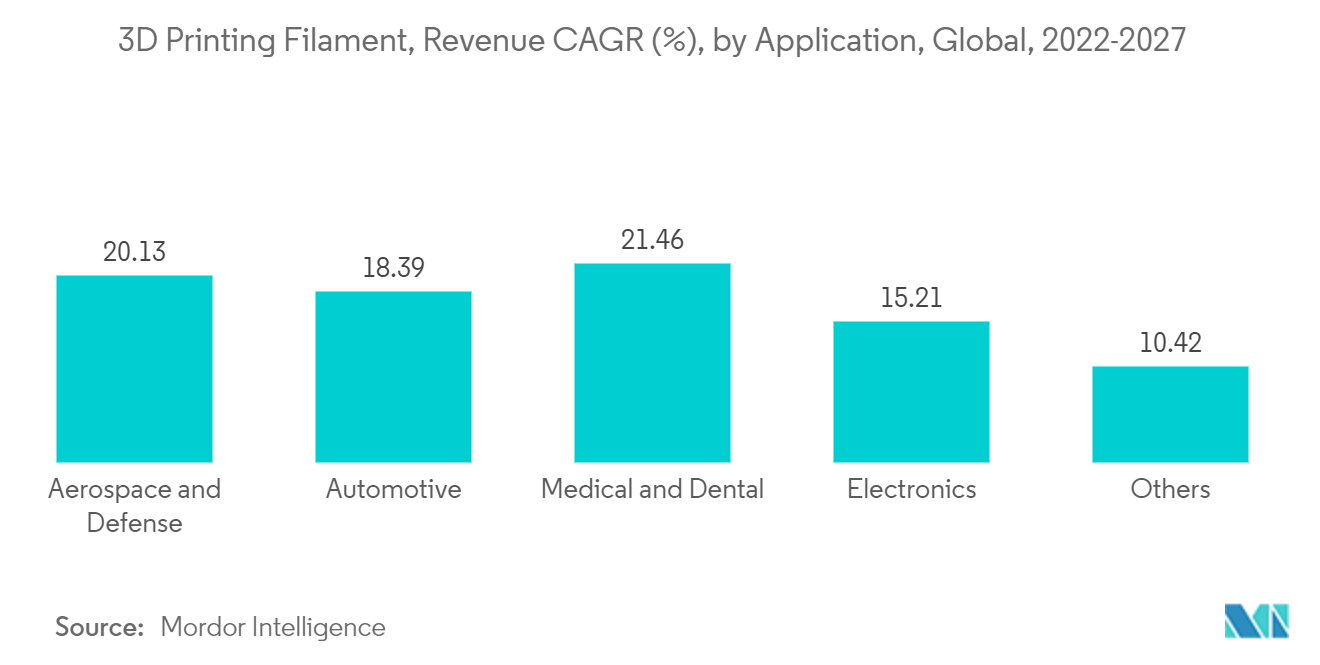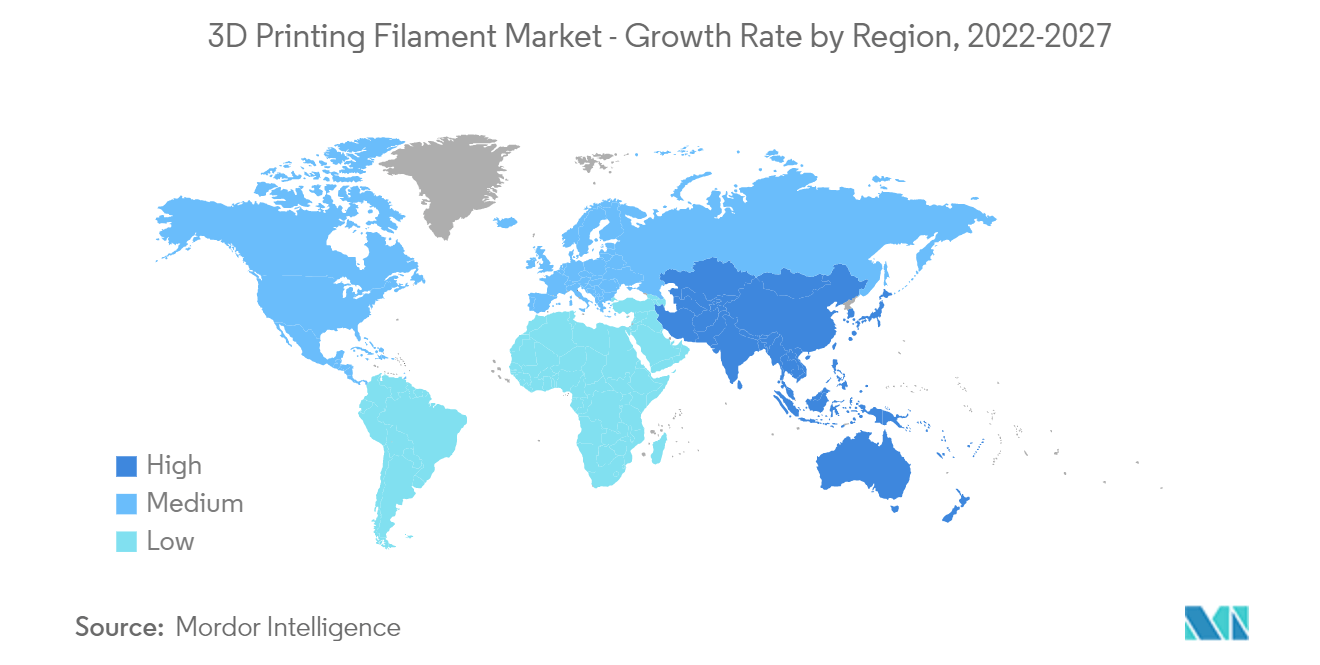Market Trends of 3D Printing Filament Industry
This section covers the major market trends shaping the 3D Printing Filament Market according to our research experts:
Increased Demand from the Medical and Dental Segment
- The Medical and Dental Industry is the leading industry that uses 3D printing filaments. The industry contributes to around 30-35% of the total applications of 3D printing filaments.
- 3D printing technology using different filaments allowed the creation of tissues and organoids, surgical tools, patient-specific surgical models, and custom-made prosthetics as applications in the medical and dental industry. These 3D printed objects are significantly contributing to the advancement and development of the industry.
- Medical devices produced by 3D printing include orthopedic and cranial implants, surgical instruments, dental restorations such as crowns, and external prosthetics.
- In August 2022, Nexa3D, an industrial 3D printing solution company, announced its work on advancing its digital dentistry portfolio by making new expansions and installations for the 3D printing processes for applications in the dental industry.
- In August of 2022, Lithoz, a 3D ceramic printing reported the first half of the year as the most successful first half in its history due to the increased order of its products. The company offers a wide range of ceramic 3D printers used for various applications, including medical, dental, and industrial applications.
- Owing to all the above-mentioned factors for 3D printing filaments, its market is expected to grow rapidly over the forecast period.

Europe Region to Dominate the Market
- The European region is expected to dominate the market. In the region, Germany is the largest economy in terms of GDP. Germany, United Kingdom and France are among the fastest emerging economies globally.
- As of June 2021, in Europe, expenditure on medical technology per capita accounted for EUR 265 (~USD 278.47). Moreover, as of June 2021, an average of ~11% of gross domestic product (GDP) is spent on healthcare in Europe.
- According to MedTech Europe, over 33,000 medical technology companies are present in Europe. Most of them are located in Germany, followed by Italy, the United Kingdom, France, and Switzerland. Small and medium-sized companies (SMEs) make up around 95% of the medical technology industry.
- The German aerospace industry includes more than 2,300 firms located across the country, with northern Germany recording the highest concentration of firms. The country hosts many production bases for aircraft interior components and materials, largely in Bavaria, Bremen, Baden-Württemberg, and Mecklenburg-Vorpommern.
- According to the Department for International Trade, the electronics sector in the United Kingdom contributes GBP 16 billion (~USD 19.53 billion) each year to the local economy. The country currently holds 40% of the share in the available electronics design industry in Europe. Current expertise within the industry is focused on integrated circuits (ICs), RFIDs, optoelectronics, and electronic components.
- France has been witnessing an increase in aircraft manufacturing and assembly operations in recent times as it is a major manufacturing base for manufacturers such as Airbus, Safran, Embraer, and Daher-Socata.
- France is continuing with its plan to increase its defense budget by EUR 1.7 billion (~ USD 2.08 billion) per year between 2019-2025 and to fulfill its commitment to increase the defense budget to 2% of its GDP by 2025.
- All the factors mentioned above are expected to boost the demand for 3D printing filament in the region.


